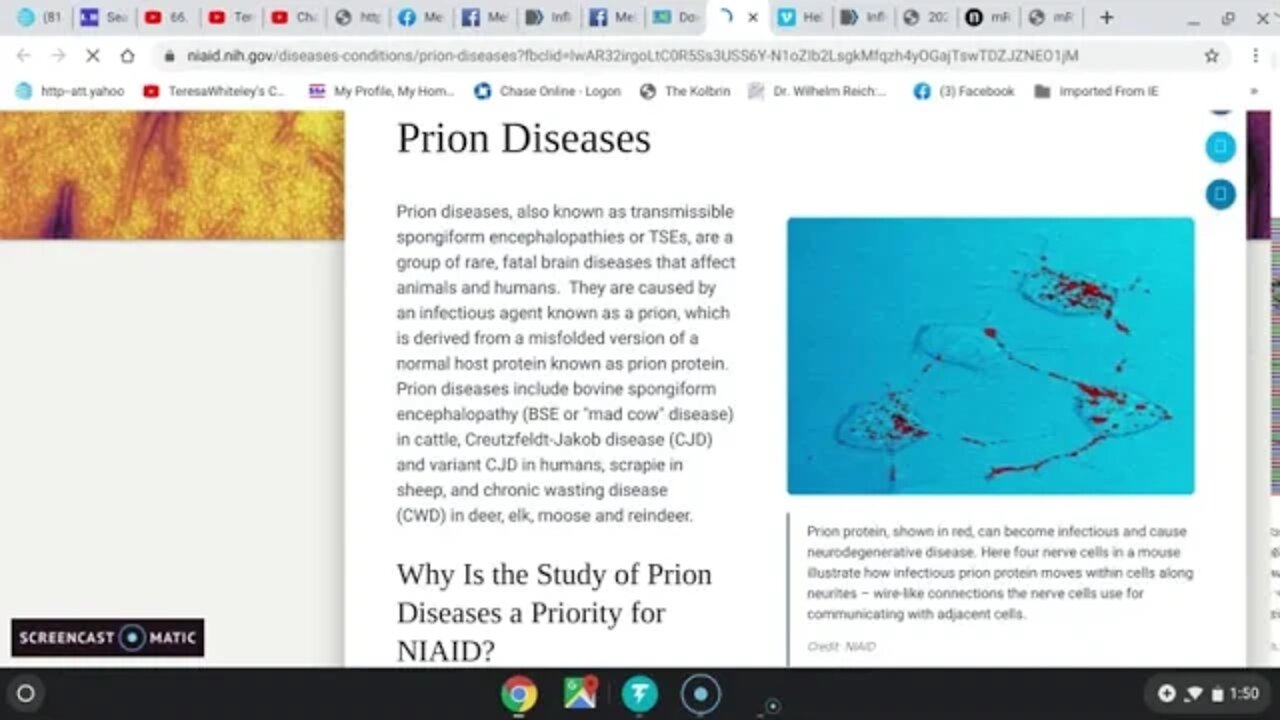Premium Only Content

More on Epstein Borrielosis AIDS with Mel
In it's molecular forms called Prion Proteins
In it's most basic forms it is called Myco PLASMA, Ana PLASMOSIS, Toxo PLASMOSIS or Spiro PLASMA--Exosomes, Blebs, Gemma, TAU. And your baaad cholesterol.
In it's viral forms it is host gene dependent LEGIONS.
In its bacterial forms it is MANY esp. Ehrlichia and H.pylori, TB, According to where it resides .
It's infectious organisms protected in fungus. You can kill the infections but the immune suppression they cause isn't easily fixed.
All of your so called viruses are simply morphological forms of infinite host gene variations.....Their cystic viral morphologies and secreted blebs containing seed formerly known as Prion and flagellum that recombines and grows with infectious DNA.
I go through this all pretty quickly and I realize it is alot of information
Mel's links are public. You should go to her page and check out her stuff.
https://m.facebook.com/story.php?story_fbid=10209868849152033&id=1657389649&ref=m_notif¬if_t=comment_mention&refid=52&__tn__=R
Possible roles of amyloids in malaria pathophysiology
https://pubmed.ncbi.nlm.nih.gov/28031872/
RepA-WH1, the agent of an amyloid proteinopathy in bacteria, builds oligomeric pores through lipid vesicles
https://pubmed.ncbi.nlm.nih.gov/26984374/
Influenza virus exploits tunneling nanotubes for cell-to-cell spread
https://pubmed.ncbi.nlm.nih.gov/28059146
Hepatitis C virus-induced prion protein expression facilitates hepatitis C virus replication
https://pubmed.ncbi.nlm.nih.gov/29076011/
https://newspunch.com/cdc-morgellons-disease/
Evidence that DNA is present in abnormal tubulofilamentous structures found in scrapie.
https://www.ncbi.nlm.nih.gov/pmc/articles/PMC280256/?fbclid=IwAR0UcBqDfu8ox_0aOS_6C2b2KyeOQLvzN3Rx-SP8vw8lUC_fHs-IwapDqMc
HeLa Cells https://vimeo.com/9581140?fbclid=IwAR2DDNDtC1syWYdGmVEuiWPvKV0AH1FMSmrW328BjlvGXpt4yxz8bqnxpxk
MicroRNAs of Epstein-Barr Virus Control Innate and Adaptive Antiviral
Immunity
Abstract
Epstein-Barr virus (EBV) has established lifelong infection in more than 90% of humanity. While infection is usually controlled by the immune system, the human host fails to completely eliminate the pathogen. Several herpesviral proteins are known to act as immunoevasins, preventing or reducing recognition of EBV-infected cells. Only recently were microRNAs of EBV identified to reduce immune recognition further. This Gem summarizes what we know about immunomodulatory microRNAs of herpesviruses.
Keywords: cancer; human herpesviruses; immune evasion; immune surveillance; microRNA.
https://pubmed.ncbi.nlm.nih.gov/28592533/
"Epstein Borrielosis Aids is like the serpent constantly shedding it's skin. I have often wondered if that is where they got the serpents on the staff of medi sin"
Epstein-Barr virus: a master epigenetic manipulator
Abstract
Like all herpesviruses, the ability of Epstein-Barr virus (EBV) to establish life-long persistent infections is related to a biphasic viral lifecycle that involves latency and reactivation/lytic replication. Memory B cells serve as the EBV latency compartment where silencing of viral gene expression allows maintenance of the viral genome, avoidance of immune surveillance, and life-long carriage. Upon viral reactivation, viral gene expression is induced for replication, progeny virion production, and viral spread. EBV uses the host epigenetic machinery to regulate its distinct viral gene expression states. However, epigenetic manipulation by EBV affects the host epigenome by reprogramming cells in ways that leave long-lasting, oncogenic phenotypes. Such virally-induced epigenetic alterations are evident in EBV-associated cancers.
https://pubmed.ncbi.nlm.nih.gov/28780440/
https://www.truthcures.org/
https://www.lymeneteurope.org/
How the Internet of cells has biologists buzzing
Networks of nanotubes may allow cells to share everything from infections and cancer to dementia-linked proteins.
https://www.nature.com/news/how-the-internet-of-cells-has-biologists-buzzing-1.22645
https://phys.org/news/2019-02-tunneling-nanotubes-tnts-concept-cell.html
-

Epstein Borreliosis AIDS
2 years agoOPERATION WARPED SPEEDILY ROLLING OUT THE GREAT RESET OF HUMANITY AND THE BIOSPHERE
3752 -
 LIVE
LIVE
Badlands Media
7 hours agoBadlands Daily: April 29, 2025
2,559 watching -
![🔴[LIVE TRADING] Trump Admin Discusses New Trade Deals || The MK Show](https://1a-1791.com/video/fww1/4d/s8/1/Z/T/9/F/ZT9Fy.0kob-small-The-MK-Show-Apr.-29th.jpg) LIVE
LIVE
Matt Kohrs
7 hours ago🔴[LIVE TRADING] Trump Admin Discusses New Trade Deals || The MK Show
1,648 watching -
 LIVE
LIVE
LFA TV
13 hours agoALL DAY LIVE STREAM - TUESDAY 4/29/25
1,172 watching -
 LIVE
LIVE
Wendy Bell Radio
5 hours agoEven the Left Knows It's Too Far Left
8,923 watching -
 LIVE
LIVE
Randi Hipper
25 minutes agoBLACKROCK BUYS NEARLY $1 BILLION WORTH OF BITCOIN
56 watching -
 LIVE
LIVE
2 MIKES LIVE
1 hour agoTHE MIKE SCHWARTZ SHOW with DR. MICHAEL J SCHWARTZ 04-29-2025
153 watching -
 57:06
57:06
BEK TV
11 hours agoExposing the Left’s Agenda: Border Chaos, Gun Control, and 2028 Predictions - Nick Adams
1.22K -
 1:34:18
1:34:18
Chicks On The Right
4 hours agoMedia insists on protecting criminals, Canada is lost, and Schumer ain't effin' leavin'
19.6K6 -
 14:38
14:38
Cowboy Kent Rollins
11 days ago $3.25 earnedMountain Man Breakfast | Hearty Breakfast Casserole
15.2K17